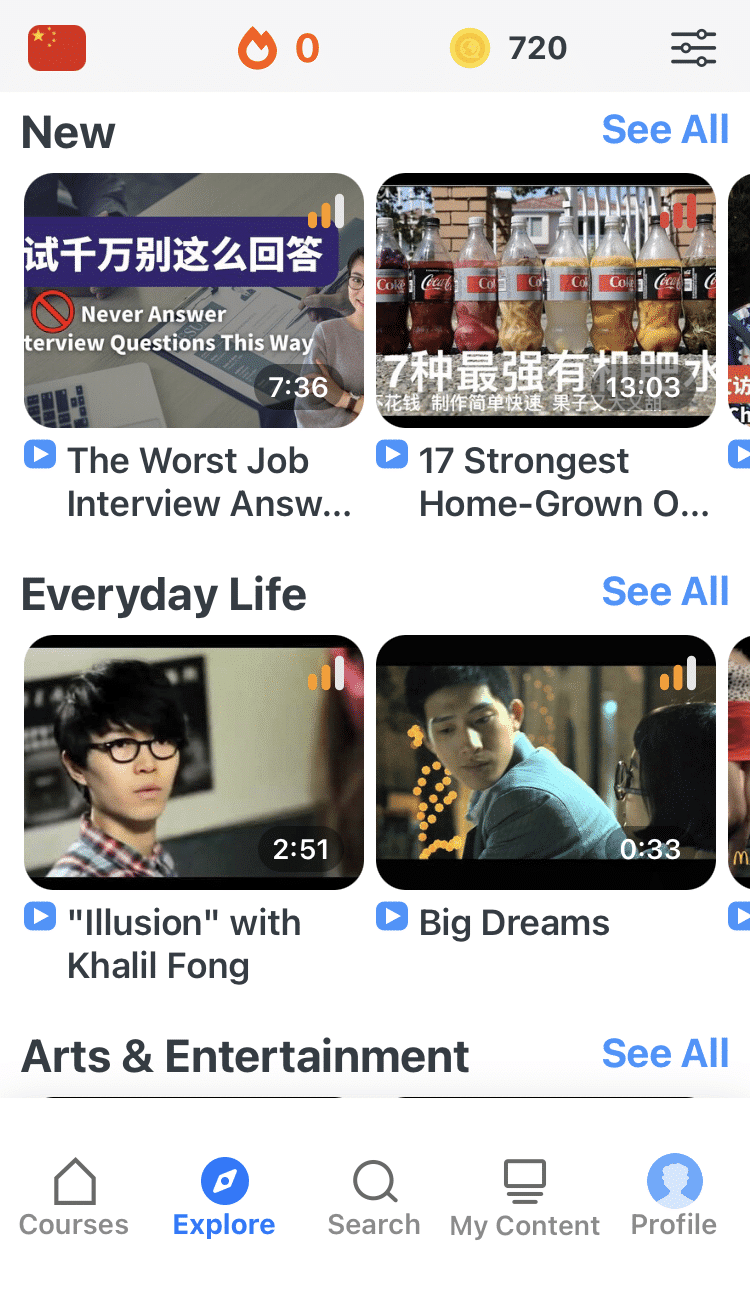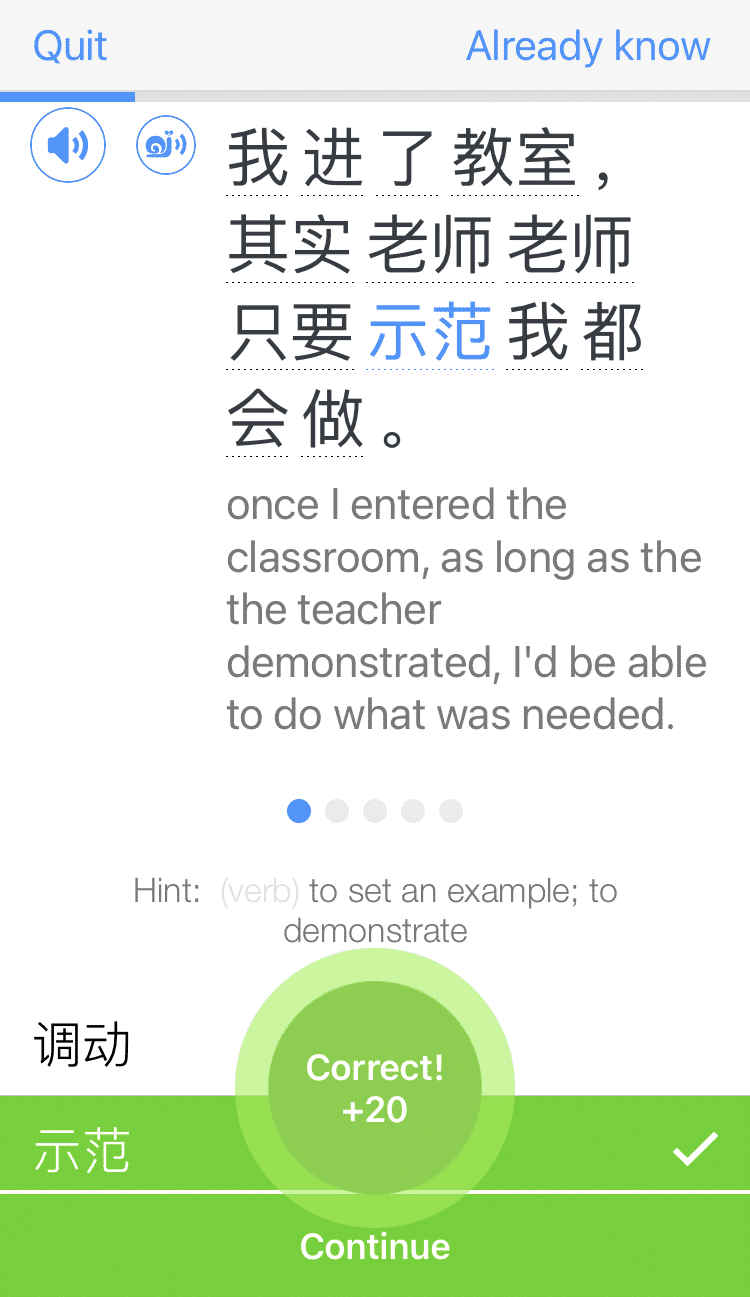
15 Mandarin Slang Words Your Chinese Textbook Isn’t Teaching You
When learning any language, it’s important to go beyond the textbook words and understand what’s going on in reality with the locals.
Learning Mandarin slang words will greatly improve your day-to-day communication in China.
To have a clear grasp of trending Chinese pop culture, which is constantly changing, it’s important to keep up with Mandarin slang and what people are using in conversations.
To help you get started, we’ve put together 15 Mandarin slang words for beginners.
Let’s take a look.
Contents
- 1. 94 九四 (jiǔ sì)
- 2. MM
- 3. PMP
- 4. 250 二百五 (èr bǎi wǔ)
- 5. 阿猫阿狗 (ā māo ā gǒu)
- 6. 算了 (suàn le)
- 7. 去你的! (qù nǐ de!)
- 8. 不咋的 (bù zǎ de)
- 9. 爱谁谁 (ài shéi shéi)
- 10. 才不呢 (cái bù ne)
- 11. 丑八怪 (chǒu bā guài)
- 12. 花心 (huā xīn)
- 13. 土 (tǔ)
- 14. 没门儿 (méi mén er)
- 15. 眼皮底下 (yǎn pí dǐ xia)
Download: This blog post is available as a convenient and portable PDF that you can take anywhere. Click here to get a copy. (Download)
1. 94 九四 (jiǔ sì)
94 is an example of a phrase that has become popular due to the Internet and online chatting. It means “precisely,” “exactly” or something along the lines of “I know.” It’s similar to the existing Chinese phrase: 就是 (Jiùshì).
A: 你真漂亮. (nǐ zhēn piào liang).
A: You are so beautiful!
B: 94, 我知道.
B: Yes, I know.
2. MM
This is another phrase that has been invented, and gained popularity due to the internet. Just as GG stands for “boy” or “brother,” because of 哥哥 (Gēgē – older brother), MM is short for 妹妹 (Mèimei – younger sister). In the internet world, MM can simply mean “girl” as well as “sister.”
It can also stand for “美美 (měi měi – pretty). When MM is used, it usually means a young or pretty girl, so be careful when you choose to use it.
MM的名字叫小红.
The pretty girl’s name is Little Red.
3. PMP
PMP comes from the phrase 拍马屁 (pāi mǎ pì), which directly translates to “patting the horse’s backside,” and is equivalent to the English version of a bootlicker or a suck-up. In essence, it refers to someone who may just be flattering you and may not be completely truthful about the situation.
你不要在我面前PMP拍马屁.
Do not flatter me.
4. 250 二百五 (èr bǎi wǔ)
The term for this means “idiot” or “moron,” and comes from an ancient Chinese story. Previously in China, the square holes in copper coins were used to string them together. 1000 coins stringed together was a “diao.” Half of a diao or 半吊子 (bàn diào zi) was used as slang to talk about someone who was inadequate.
As a way to describe themselves, modest Chinese scholars went a step further and took half of the half— hence the 250—to show they were real idiots.
他真的是个二百五!
He really is an idiot!
5. 阿猫阿狗 (ā māo ā gǒu)
This phrase is similar to the English expression of “any Tom, Dick or Harry,” meaning “anyone and everyone.” The origins came from Ancient China, wherein 阿猫 (ā māo) and 阿狗 (ā gǒu) were often used as nicknames for people.
导演不会找阿猫阿狗当女主角.
The director would not just find anyone to be the star actress.
6. 算了 (suàn le)
This phrase means to “forget it.” It can be used in many situations, from meaning a casual “whatever,” in everyday scenarios, to a firm or more serious “let it go.”
A: 你明天晚上还想出去跳舞吗? (nǐ míng tiān wǎn shàng hái xiǎng chū qù tiào wǔ ma?)
A: Do you still want to go dancing tomorrow night?
B: 算了吧.
B: Let’s forget it.
7. 去你的! (qù nǐ de!)
Depending on the situation, this phrase can range anywhere from the firm statement “Go away!” or “Off with you!”
Jokingly, or in the right situation, it can be appropriate to use. However, you’ll want to be careful when you use this slang if you’re not trying to offend your new (or old) friends.
A: 下次不应该那样表现. (xià cì bù yìng gāi nà yàng biǎo xiàn.)
A: Next time you shouldn’t act that way.
B: 去你的!
B: Off with you!
8. 不咋的 (bù zǎ de)
不咋的 means “not great,” or similar to saying in English “not so hot.” It can be used to describe a situation or a person.
我认识他, 他不咋的.
I know him, he’s not that great.
9. 爱谁谁 (ài shéi shéi)
The meaning of this phrase is “do what you want,” or “whatever.” It has a nonchalant attitude, similar to the English phrase “who cares!” It stems from the local Beijing dialect and is most popular there.
这事就这样了, 不能再改变了! 爱谁谁!
I’m done talking about this issue, it cannot be changed. Whatever, I don’t care anymore!
10. 才不呢 (cái bù ne)
才不呢 is an idiom similar to “no way” or “not at all.” It’s commonly used like the English phrase “of course not!”
A: 她是你的女朋友吗? (tā shì nǐ de nǚ péng yǒu ma?)
A: Is she your girlfriend?
B: 才不呢!
B: Of course not!
11. 丑八怪 (chǒu bā guài)
This phrase is an extreme way of saying someone is ugly. It roughly translates to “monster-looking.” Depending on the situation, it can sometimes be used to affectionately show that something or someone is ugly.
昨天晚上, 我碰见了一个丑八怪.
Last night I met someone ugly.
12. 花心 (huā xīn)
The literal translation of this phrase is “flower heart,” but means something along the lines of “wandering eyes.” It’s usually used to describe men, but can also be used for women as well.
When used in a phrase, its connotation is usually negative and will describe someone who has not been faithful in the relationship.
你这个花心大萝卜!
You cheating scum! (Literally: You flower heart carrot!)
13. 土 (tǔ)
Most beginner learners will have come across this word early on, and it translates to “dirt.” When used to describe a person or object, it can also mean “nerdy” or “unfashionable.”
The origins of this come from the fact that people who work with soil and dirt are usually peasants, and they’re not always seen to have all the class or elegance as a city person might. It’s similar to the English slang of “peasant.”
It’s not a compliment, so be careful when you decide to use this word!
他的衣服有点土.
His clothes are a little unfashionable.
14. 没门儿 (méi mén er)
The literal translation of 没门儿 (méi mén er) is “no door,” and means “No way!” or “Not a chance!”
想从我这里拿一点消息, 没门儿!
You think you can get information from me? Fat chance!
15. 眼皮底下 (yǎn pí dǐ xia)
This slang’s translation is “under the eyelids,” and means something along the lines of “under one’s nose.”
我手机从我眼皮底下被小偷偷走了.
My phone was stolen by a thief right under my eyes.
There you have it! These 15 Mandarin slang phrases will help you speak more like a native and get you on your way to mastering both textbook and colloquial Chinese. Slang is everywhere, and you can find even more slang used in context through the videos on FluentU.
Have fun with it, and keep practicing!
Download: This blog post is available as a convenient and portable PDF that you can take anywhere. Click here to get a copy. (Download)
And One More Thing...
If you want to continue learning Chinese with interactive and authentic Chinese content, then you'll love FluentU.
FluentU naturally eases you into learning Chinese language. Native Chinese content comes within reach, and you'll learn Chinese as it's spoken in real life.
FluentU has a wide range of contemporary videos—like dramas, TV shows, commercials and music videos.
FluentU brings these native Chinese videos within reach via interactive captions. You can tap on any word to instantly look it up. All words have carefully written definitions and examples that will help you understand how a word is used. Tap to add words you'd like to review to a vocab list.
FluentU's Learn Mode turns every video into a language learning lesson. You can always swipe left or right to see more examples for the word you're learning.
The best part is that FluentU always keeps track of your vocabulary. It customizes quizzes to focus on areas that need attention and reminds you when it’s time to review what you’ve learned. You have a 100% personalized experience.
Start using the FluentU website on your computer or tablet or, better yet, download the FluentU app from the iTunes or Google Play store. Click here to take advantage of our current sale! (Expires at the end of this month.)





